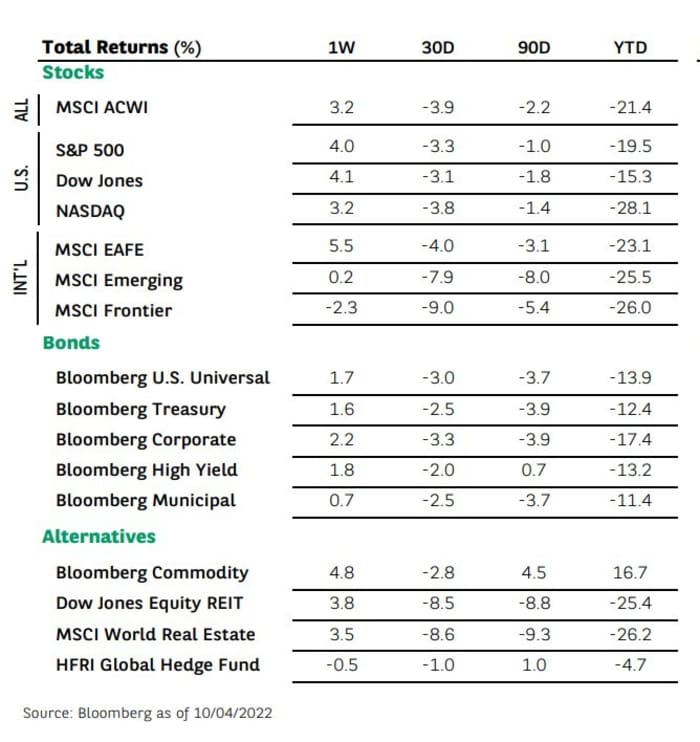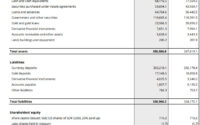Bond markets facing historic losses grow anxious of Fed that ‘isn’t blinking yet’
The Federal Reserve has been showing no signs of letting up on aggressive rate hikes, even as its policies fuel carnage for the ages across the roughly $53 trillion U.S. bond market.
As a result, borrowers from the U.S. government to major corporations and home buyers have been paying the most for access to credit in more a decade. The payoff — eventually — should be lower inflation.
But for many bond investors, keeping credit spigots open over the past nine months has meant enduring the sharpest whiplash from rates volatility in their careers, even though the pain still might not be over.
“We are buying some Treasurys, because we are drinking the Kool-Aid in the messaging from the Fed,” said Jack McIntyre, portfolio manager for global fixed-income at Brandywine Global Investment Management, by phone.
The message from central bankers has been a vow to bring the roughly 8% U.S. inflation rate down to the Fed’s 2% annual target, through higher interest rates and a smaller balance sheet, even if it means pain for families and businesses.
“But the timing of that is tough, and how much tightening is required to break inflation,” McIntyre said. “The Fed isn’t blinking. That’s why more pain could be right around the corner.”
See: Fed’s Cook backs policy of higher-for-longer interest rates
Worst selloff in 40 years
The dramatic repricing in bonds this year could give investors a badly needed break after a painful nine months.
Much of the hit to bond prices can be tied to gyrations in rates, including the benchmark 10-year Treasury yield,
TMUBMUSD10Y,
which briefly touched 4% in September, its highest since 2010, before swinging lower and rebounding to roughly 3.9% on Friday.
For a fuller picture of the wreckage, the selloff in Treasurys from 2020 through July 2022 was pegged as the worst in 40 years by researchers at the Federal Reserve Bank of New York, but also the third-largest since 1971.
“I don’t think the bond market really knows which direction to go,” said Arvind Narayanan, a senior portfolio manager and co-head of investment-grade credit at Vanguard, by phone. “You are seeing that in daily volatility. The U.S. bond market is not supposed to trade by 20 basis points in a day.”
Volatility in financial markets might feel far removed from everyday life, given the roaring jobs market that the Fed wants to tamp down. Even so, haven sectors like Treasurys have tumbled 12% this year (see chart), while lower-risk segments like corporate bonds were at minus-17% as of Oct. 4, on a total return basis.

The historical selloff of 2022.
Bank of the West, Bloomberg
To be sure, stocks have tumbled even more, with the S&P 500 index
SPX,
down about 23% on the year through Friday, the Dow Jones Industrial Average
DJIA,
off nearly 19% and the Nasdaq Composite
COMP,
31% lower, according to FactSet.
Bond yields and prices move in opposite directions. Higher interest rates make bonds issued at low rates less attractive to investors, while rate cuts boost the appeal of bonds offering higher returns.
“If you continue to see stress in the market, and we go into a recession, bonds are most likely set to appreciate and outperform from here,” Narayanan said of investment-grade corporate yields now near 5.6%, or their highest since 2009, but also that “liquidity will remain at a premium.”
Cracks appear
Major corporations and American households appear to be weathering the rate storm that’s washed over financial markets, with both groups borrowing or refinancing during the pandemic at historically low rates.
But an area that looks cloudier, despite a recent uptick in workers reporting to jobs in-person, has been the office component of commercial real estate.
See: Commercial property woes grow with only 9% of Manhattan office workers back in the office full time
“You just have too much space and the world has changed,” said David Petrosinelli, managing director, sales and trading at InspereX, a broker-dealer.
While trading securitized products, from mortgage bonds to asset backed debt, has been his specialty, Petrosinelli said debt deals across credit markets recently have struggled to cross the line or have been postponed, as issuance conditions have gotten worse.
“I think it’s a tough row to hoe,” he said, specifically of commercial mortgage bonds with heavy exposure to office space, or leverage loans from companies with less tolerance for rate hikes.
“We’ve seen nothing like a deep recession priced into those areas.”
[ad_2]
Source link


